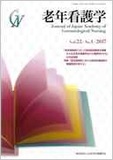Japanese
English
- 販売していません
- Abstract 文献概要
- 参考文献 Reference
抄録
日本では一般病床での身体拘束を規制する法律は存在しない.一般病床は治療を優先する特性から,介護保険施設向けの「身体拘束ゼロへの手引き」(以下,「手引き」)の要件をそのまま適用するには困難さがある.最高裁判所平成22年1月26日判決は,一般病床での身体拘束に法的な判断を下した唯一の最高裁判決である.その判例評釈と,各医療施設の身体拘束ガイドラインの内容を「手引き」の3要件をもとに比較検討した.結果,裁判で身体拘束是非を判断する根拠は〈切迫性を判断すること〉〈拘束に代替する手段の実施〉〈拘束を行う時間〉〈医師の参加〉〈拘束中における状態確認〉〈説明〉〈承諾書〉〈記録〉であり,同様の視点で一般病床の各ガイドラインでは具体的な看護内容が示されていた.一般病床で身体拘束をする際には,「手引き」の3要件の考え方を踏襲した多くの複雑な手順が必要とされていることが明らかとなり,期待される看護の責任が多岐に渡ることが示唆された.
In Japan, there is no law to regulate the physical restraint of patients in general beds, but there is “guidance for zero physical restraint” for long-term care facilities. Because staff members prefer offering treatment without imposing any physical restraint in general beds, it is difficult to implement the “guidance for zero physical restraint.” The judgment of the Supreme Court of Japan on January 26, 2010 is the only legal judgment by the Supreme Court regarding physical restraint in general beds in Japan. The purpose of this study is to examine the viewpoint and specific contents considering physical restraint in general beds by reviewing the literature assessing “the judgment of the Supreme Court of Japan on January 26, 2010” and the physical restraint guidelines that have been created in each hospital. As a result, we obtained categories such as “making sure of imminence,” “alternative to restraint,” “restraint time,” “participation of doctors,” “status check during the restraint,” “accountability,” “written consent,” and “record.” Hospitals' guidelines showed similar viewpoints with reference to specific nursing contents. These findings revealed that, when considering the physical restraint of patients in general beds, many complicated procedures conforming to the “guidance for zero physical restraint” need to be followed, and that nurses are expected to fulfill diverse responsibilities in this regard.
Copyright © 2017, Japan Academy of Gerontological Nursing All rights reserved.


